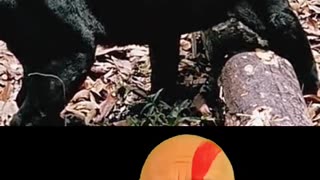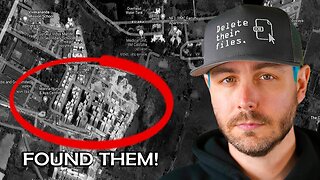Premium Only Content

Naja negra | Black-necked spitting cobra | Naja nigricollis | @Lika pxl | Biólogo Henrique
Vídeo de @Lika pxl
The black-necked spitting cobra (Naja nigricollis) is a species of spitting cobra found mostly in sub-Saharan Africa. They are moderately sized snakes that can grow to a length of 1.2 to 2.2 m (3.9 to 7.2 ft) in length. Their coloration and markings can vary considerably. They prey primarily on small rodents. They possess medically significant venom, although the mortality rate for untreated bites on humans is relatively low (~ 5–10%, in endemic regions under 1%). Like other spitting cobras, they can eject venom from their fangs when threatened (one drop over 7 metres (23 ft) and more in perfect accuracy). The neurotoxic venom irritates the skin, causing blisters and inflammation, and can cause permanent blindness if the venom makes contact with the eyes and is not washed off.
Naja nigricollis belongs to the cobra genus Naja under the family Elapidae. It previously included two subspecies that have been moved to the species Naja nigricincta – the zebra spitting cobra (Naja nigricincta nigricincta) and the black spitting cobra (Naja nigricincta woodi).
Taxonomy
Naja nigricollis is classified under the genus Naja of the family Elapidae. It was first described by Norwegian zoologist Johan Reinhardt in 1843. The generic name Naja is a Latinisation of the Sanskrit word nāgá (नाग), meaning "cobra". The specific epithet nigricollis is Latin for "black-necked": niger, meaning "black", and collis, meaning "neck".
Naja nigricollis previously included two subspecies – Naja nigricollis nigricincta and Naja nigricollis woodi. But genetic studies in 2007 by Wolfgang Wüster et al. have concluded that these subspecies should be treated under a separate species, Naja nigricincta.[
Distribution and habitat
The species is very common and is widespread through much of sub-Saharan Africa and is found in western, eastern, central, and parts of southern Africa. It is absent from the rainforests of the Congo Basin. It has been recorded from Angola, Benin, Burkina Faso, Cameroon, Central African Republic, Chad, Democratic Republic of the Congo (except in the center), Congo, Ethiopia, Gabon, Ghana, Guinea Bissau, Guinea, Ivory Coast, Kenya, Liberia, Mali, Niger, Nigeria, Senegal, Sierra Leone, Gambia, Mauritania, Sudan, Tanzania, Somalia, Togo, Uganda, Zambia. Older records from South Africa, Botswana, Zimbabwe, Swaziland, Mozambique, or most of Namibia refer to Naja mossambica or Naja nigricincta, which were formerly regarded as subspecies of N. nigricollis.
N. nigricollis usually inhabits savanna and semi-desert regions of Africa. However, they can be found at altitudes up to 1,800 metres (5,900 ft), as well as in tropical and subtropical regions of central Africa in moist savanna and cleared former forest regions, particularly near rivers and streams.Adaptable snakes, Naja n. nigricollis occurs in southeastern Nigeria where their habitat has been transformed from rainforest to man-made farmlands, plantations, suburban areas, and a few fragmented forests. This species of cobra has found advantages in the drastic changes which have taken place in Nigeria's rainforests. A study by herpetologist Luca Luiselli suggests this snake now forages in much drier microhabitats.
The range of Naja nigricollis is currently expanding from the southeastern regions of Nigeria to the more desert and arid conditions in the central part of the nation.They also live in coastal scrubs and dry grasslands. Like other cobra species, they may find abandoned termite mounds or rodent holes to hide or cool off. However, tree trunks seem to be their favourite hiding places. They are excellent tree climbers, thus can be arboreal at times. Because they are so common across Africa, they are encountered in villages or small towns where they may come in direct contact with people.
This species is sometimes found in captivity, and wild-caught individuals are generally nervous and prone to spitting. Captive-bred animals tend to be much more docile and calm when compared to their wild-caught counterparts.
Venom
The venom of Naja nigricollis is somewhat unusual among elapids in that it consists primarily of cytotoxins,[18] but with other components also. It retains the typical elapid neurotoxic properties while combining these with highly potent cytotoxins (necrotic agents)[19] and cardiotoxins.[20] Bite symptoms include severe external hemorrhaging and tissue necrosis around the bite area and difficulty breathing. Although the mortality rate in untreated cases is low (~ 5–10%),[21] when death occurs, it is usually due to asphyxiation by paralysis of the diaphragm. The LD50 of Naja nigricollis is 2 mg/kg SC and 1.15 mg/kg IV. The average venom yield per bite of this species is 200 to 350 mg (dry weight) according to Minton (1974).[12][22]
S
-
 4:41
4:41
Biólogo Henrique
1 year agoPíton x Leopardo ou Jiboia X Onça? Biólogo Henrique corrige
8 -
 1:16:52
1:16:52
vivafrei
13 hours agoNEW STREAM! Sorry peeps
155K120 -
 5:56:14
5:56:14
SNEAKO
13 hours agoCheesur edate, Jake Shields & Myron Gaines on election
114K3 -
 39:34
39:34
Nerdrotic
15 hours ago $50.02 earnedAirbursts with Dr Malcolm LeCompte & Giants and Ancient Civilizations with Hugh Newman
123K17 -
 1:03:38
1:03:38
vivafrei
21 hours agoElection RECAP! Long-Count Chicanery! FULL Jan. 6 Pardons! Let's Mock Lichtman & MORE! Viva Frei
172K172 -
 7:52:09
7:52:09
Vigilant News Network
16 hours agoDoctors Drop Post-Election COVID Bombshell | Media Blackout
176K3 -
 14:13
14:13
Scammer Payback
12 days agoTelling Scammers Their Address
165K92 -
 5:43:21
5:43:21
Barstool Gambling
20 hours agoBig Cat and Co Sweat Out the Week 10 Sunday Slate | Barstool Gambling Cave
124K7 -
 2:49:36
2:49:36
The Jimmy Dore Show
2 days agoRumble Time Live w/ Jimmy Dore & Special Guests Roseanne Barr, Dr. Drew, Drea de Matteo & More!
586K713 -
 17:17
17:17
DeVory Darkins
1 day agoKamala Post-Election BOMBSHELL Exposes $1 BILLION Campaign DISASTER
110K273